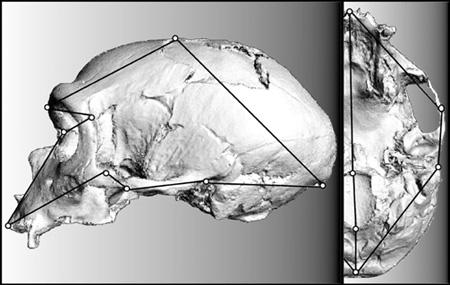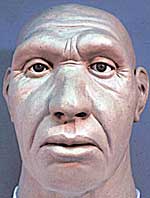Strengthening the hypothesis that Neanderthal man and modern man were two separate species
John Noble Wilford

Since their discovery in the 19th century, Neanderthals have resembled strange relatives, causing discomfort when they arrive at a family gathering. How should these relatives be treated - should they be seated next to the members of the limited family, should they be sent to the back of the room with the distant cousins, or should they be treated as those who are trying to be pushed into a place that does not belong to them?
In other words, did the Neanderthals of Europe belong to the modern human species, or were they a subspecies (that is, a species that is not completely different), or perhaps a completely different species? The answer is significant for determining the origin of the inhabitants of Europe: if Neanderthal man and Homo sapiens were not two separate species, it is possible that modern Europeans have Neanderthal blood in their blood.
Although many scientists believe that Neanderthals were a subspecies that may have interbred with Homo sapiens, new research tends to confirm the more common belief that Neanderthals and modern humans were quite different and should be defined as separate species.
The study was based on detailed measurements of the skulls of modern humans, Neanderthals and 12 other extant species of primates. The group of researchers, led by Dr. Catherine Hervati, a paleo-anthropologist from New York University, reported the findings on Tuesday in the "Academy of Sciences Proceedings of the National" journal. "What we are actually saying is that Neanderthals have no connection to modern Europeans," said Dr. Hervati in an interview.

The research results support the "single origin theory" of the development of modern man, which is one of two models that split anthropology into two camps. This theory holds that the modern Homo sapiens is a new species that appeared in Africa more than 100 thousand years ago, spread and replaced old local populations around the world. The Neanderthals were one of those groups - a separate species that did not interbreed with the new species before it disappeared.
The competing theory holds that the new immigrants from Africa interbred to one degree or another with the older populations they encountered, which may explain the existence of some superficial differences between humans in different parts of the world.
In the new study, Dr. Hervati and her colleagues, Dr. Steven Frost from the New York Institute of Technology and Dr. Kieran McNulty from Baylor University in Texas, measured certain physiological differences between existing species of primates (including chimpanzees, gorillas, baboons, monkeys and humans) and The same differences within each species.
The researchers' analysis focused on 15 "landmarks" in the skull and face of the different species, and the data was examined in XNUMXD to detect even the smallest differences. The goal, says Dr. Harvati, "was to develop a quantitative method, which would make it possible to determine what the difference is required to justify the classification of two individuals as belonging to different species."
The differences measured between modern humans and Neanderthals were much greater than those found between different subspecies and between different populations belonging to the same species. The test revealed that the two extant species of chimpanzees, for example, are closer to each other than Neanderthals and humans. According to Dr. Harvati, the study provides "the most tangible evidence that the Neanderthals are indeed a separate species within the genus Homo."

2 תגובות
Gladly, but I don't have the manpower for more immediate projects.
This article from 2004 appeared as a link in the margin of my page today in late 2017.
Everything that was said in it is known today, in light of genetic research, to be untrue.
With all the importance to the site's history, it is advisable not to mislead young and uncritical readers with information known to be incorrect. My proposal is to set aside a separate section for the history of science, and to retire within it everything that was a milestone in the progress of research but today we have progressed beyond it.